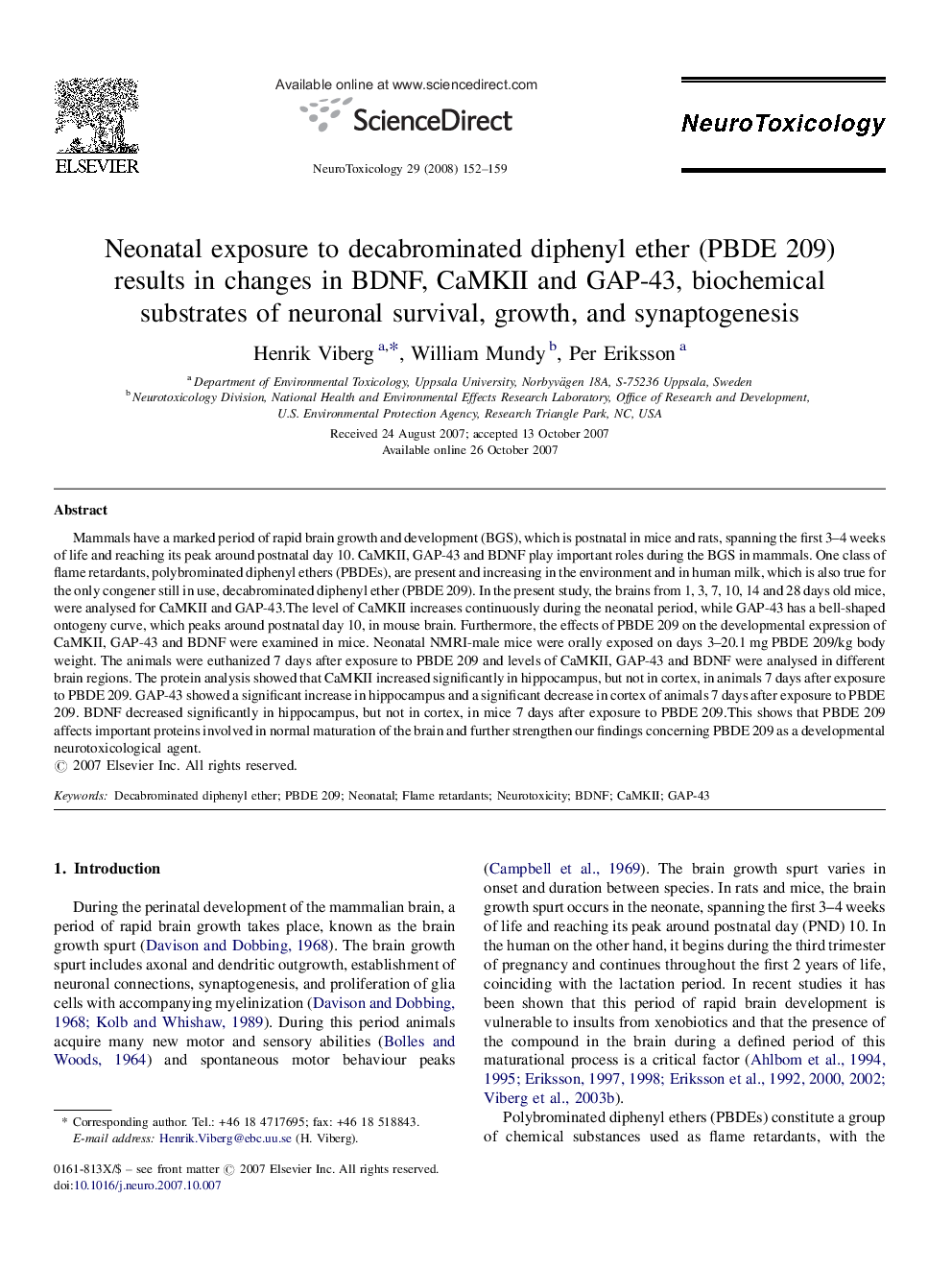| Article ID | Journal | Published Year | Pages | File Type |
|---|---|---|---|---|
| 2590456 | NeuroToxicology | 2008 | 8 Pages |
Mammals have a marked period of rapid brain growth and development (BGS), which is postnatal in mice and rats, spanning the first 3–4 weeks of life and reaching its peak around postnatal day 10. CaMKII, GAP-43 and BDNF play important roles during the BGS in mammals. One class of flame retardants, polybrominated diphenyl ethers (PBDEs), are present and increasing in the environment and in human milk, which is also true for the only congener still in use, decabrominated diphenyl ether (PBDE 209). In the present study, the brains from 1, 3, 7, 10, 14 and 28 days old mice, were analysed for CaMKII and GAP-43.The level of CaMKII increases continuously during the neonatal period, while GAP-43 has a bell-shaped ontogeny curve, which peaks around postnatal day 10, in mouse brain. Furthermore, the effects of PBDE 209 on the developmental expression of CaMKII, GAP-43 and BDNF were examined in mice. Neonatal NMRI-male mice were orally exposed on days 3–20.1 mg PBDE 209/kg body weight. The animals were euthanized 7 days after exposure to PBDE 209 and levels of CaMKII, GAP-43 and BDNF were analysed in different brain regions. The protein analysis showed that CaMKII increased significantly in hippocampus, but not in cortex, in animals 7 days after exposure to PBDE 209. GAP-43 showed a significant increase in hippocampus and a significant decrease in cortex of animals 7 days after exposure to PBDE 209. BDNF decreased significantly in hippocampus, but not in cortex, in mice 7 days after exposure to PBDE 209.This shows that PBDE 209 affects important proteins involved in normal maturation of the brain and further strengthen our findings concerning PBDE 209 as a developmental neurotoxicological agent.
